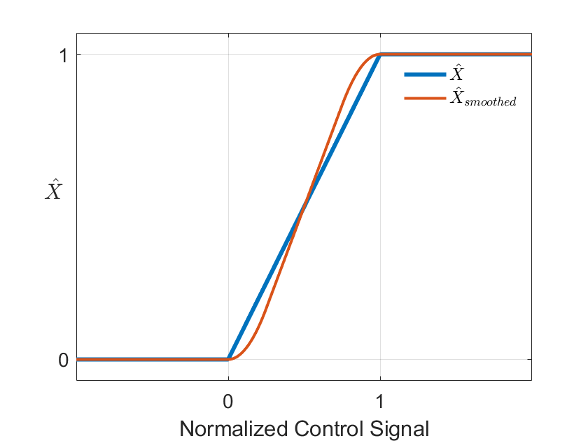Numerical Smoothing
Numerical Smoothing in Valve Opening Calculations
Since R2023a
When a valve block that uses linear parameterization is in a near-open or near-closed position, variables such as valve area or control pressure transition from constant to linear regions. The transitions between the regions are sharp and their slopes discontinuous. These transitions pose a challenge to variable-step solvers and can extend the time needed to finish the simulation run. When you enable numerical smoothing, the block removes the discontinuities.
When the Smoothing factor parameter is nonzero, the block enables numerical smoothing. The block applies the smoothing to a normalized variable. For a variable X, the normalized variable, , is
where a and b are the lower and upper limit of the variable, respectively. For most valve blocks, this limit depends on whether the valve is fully open or closed.
When you enable numerical smoothing, the block applies a smoothing factor, f, as
The smoothing function impacts all calculated valve areas or valve actuator forces, but primarily influences the simulation at the extremes of the smoothed variable. This smoothing function applies to valves and valve actuators in the gas, thermal liquid, two-phase fluid, and isothermal liquid domains.
This image shows a discontinuous normalized variable, , and a corresponding smoothed variable, , when the smoothing factor, f, is
0.5.

After smoothing, the block reverts the variable to its original limits,
[a,b]:
A smoothing factor closer to 1 increases the
effect of the smoothing function, while a smoothing factor closer to
0 decreases the effect. If the smoothing factor is equal to
0, the solver will encounter a zero crossing when the variable
X reaches a limit at a or
b.
See Also
Modeling Directional Valves in Simscape Fluids | Orifice (G) | Orifice (TL) | Orifice (IL)